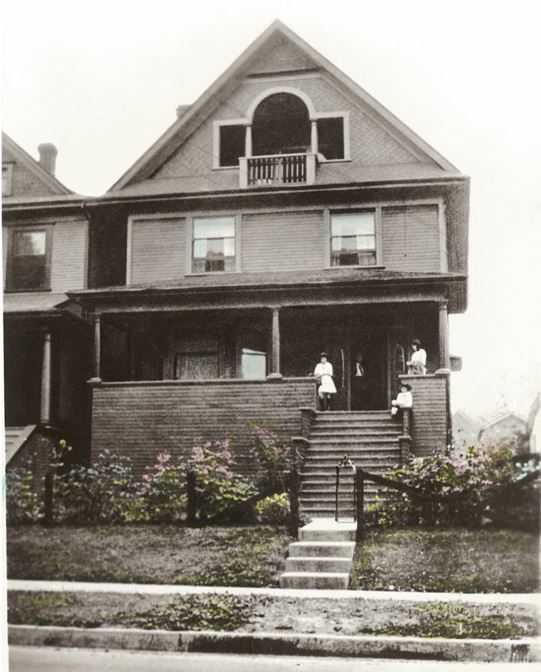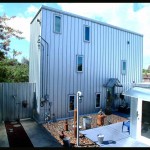A Spite house is a building “constructed or modified to irritate neighbours or other parties with land stakes. Spite houses often serve as obstructions, blocking out light or access to neighbouring buildings, or as flamboyant symbols of defiance. Because long-term occupation is at best a secondary consideration, spite houses frequently sport strange and impractical structures” Wikipedia.

From Vancouver Exposed: Searching for the City’s Hidden History
When I first heard the term “Spite house” I thought it was a style of architecture named after its designer – you know “oh that’s a Frank Lloyd Wright house” or “an Arthur Erickson house” or a “John Spite house”—turns out it’s far more interesting.
A spite house is built to piss somebody off. It’s a permanent way to give city hall the finger, or have the last word with that neighbour who has the annoying dog.
Wikipedia lists 22 examples of spite houses. The oldest dates back to 1716, when a man upset by his small share of the family’s estate in Marblehead, Massachusetts built a house just tall enough to block the view of his two brothers’ houses.
In Toowoomba, Australia, an owner who lost an appeal to put an extra storey on his house, adorned it with various pig apparel including nose and tail. Although the owner has since moved on, the house is known as The Pig House.
More recently, Stan Pike’s plan to build a rounded porch on the house he owned in Georgia was thwarted by the local Historical Preservation Commission. In retaliation, Sam painted the house a bright green with purple dots.
Vancouver’s 1913 Sam Kee Building is #19 on Wikipedia’s spite list, and has the distinction of being the thinnest commercial building in the world (Guinness Book of Records and Ripley’s Believe it or Not!) The Sam Kee Company was one of the wealthiest businesses in the early 1900s owned by Chang Toy. Originally Chang Toy owned a standard 30-foot lot at the West Pender site, but when a huge chunk of it was expropriated by the City of Vancouver, he had this structure built with the ground floor measuring just under five feet.

It hasn’t made any list as yet, but Mount Pleasant has its own Spite House. John Davis and his family started buying up and renovating dilapidated Queen Anne and Edwardian houses along the 100-block west 10th back in the early 1970s. “Nobody gave a damn about any of it at that time,” says John. “We were seen to be the lunatic fringe.”
The full story of the Davis’ houses is in At Home with History, but my favourite story is the one about the two Edwardians at 148 and 150 West 10th that intentionally touch each other. A neighbour and descendant of one of the original families told John that it was the result of a feud. Two women came over from England and had the house at 150 built right on the property line. “That didn’t offend the building code in 1907, if they even had such a thing, but it infuriated the owner of the property at 148 and he built his house the next year right up against their house in order to block the view out of the bay window on the side of 150, which he certainly achieved—I can attest to that.”
See Wikipedia for more examples of spite houses.
© All rights reserved. Unless otherwise indicated, all blog content copyright Eve Lazarus.



